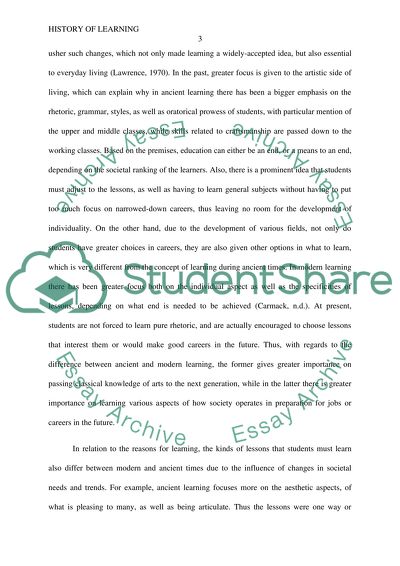Cite this document
(“What can the study of the history of learning tell us about learning Essay”, n.d.)
Retrieved from https://studentshare.org/education/1482802-what-can-the-study-of-the-history-of-learning-tell
Retrieved from https://studentshare.org/education/1482802-what-can-the-study-of-the-history-of-learning-tell
(What Can the Study of the History of Learning Tell Us about Learning Essay)
https://studentshare.org/education/1482802-what-can-the-study-of-the-history-of-learning-tell.
https://studentshare.org/education/1482802-what-can-the-study-of-the-history-of-learning-tell.
“What Can the Study of the History of Learning Tell Us about Learning Essay”, n.d. https://studentshare.org/education/1482802-what-can-the-study-of-the-history-of-learning-tell.


